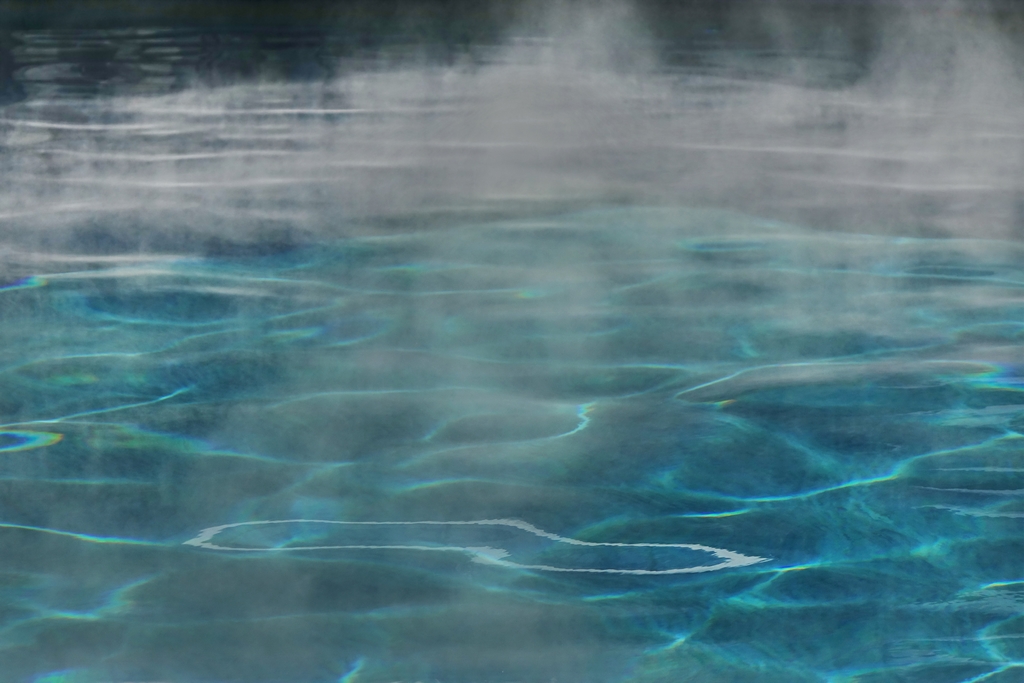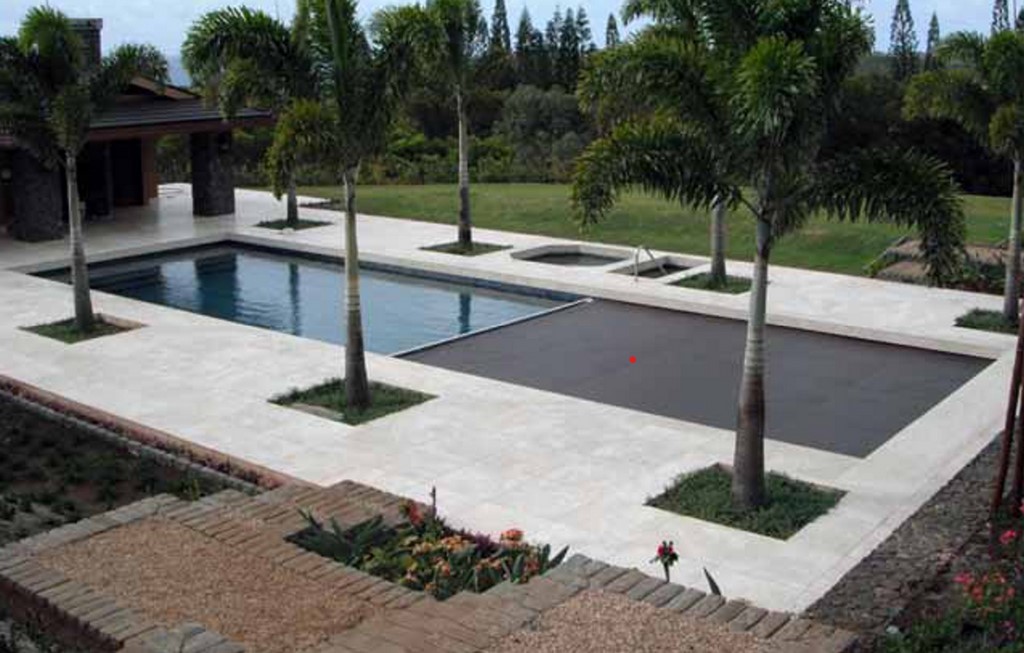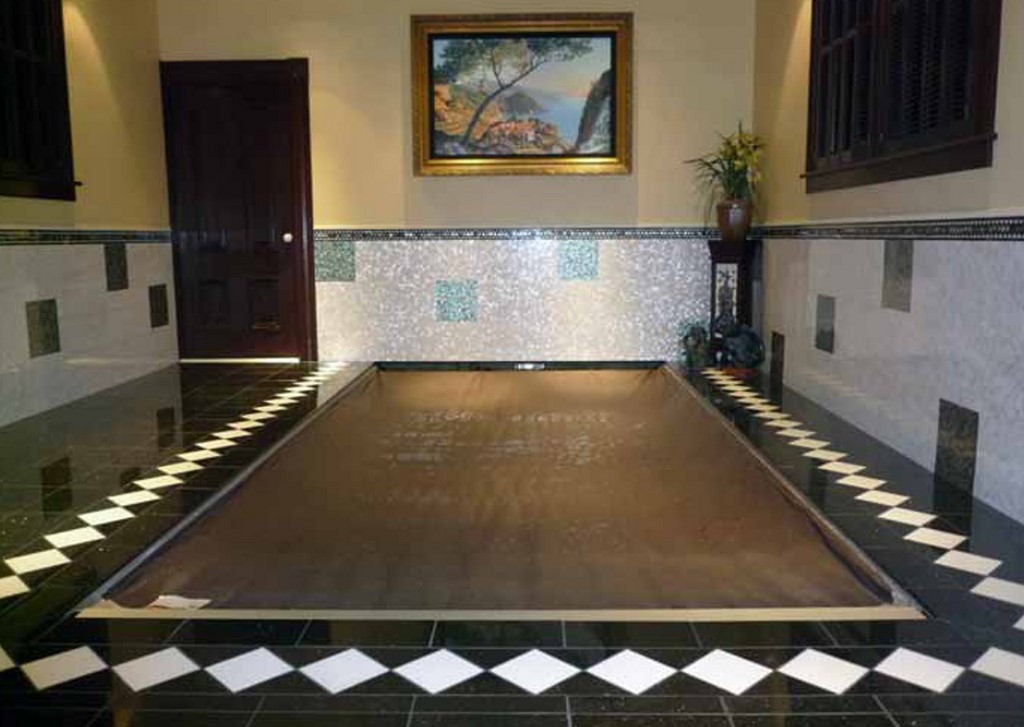The Case for Covers


As the drought drags on through the summer months, concerns over saving water are rising, and are now prompting southwestern cities and counties to implement water-conservation restrictions targeting pools. Fortunately, argues Tom Dankel, solid covers dramatically reduce evaporation and are a front-line asset in the fight to keep pools in use.
By Tom Dankel
It’s as predictable as the sunrise. Whenever we are in the midst of an extended drought, restrictions on filling pools are sure to follow.
Never has that been truer than today. By some estimations, the western United States is in a “mega-drought” that reaches back 22 years. Although there have been some wet years in that stretch, overall, we are in an historic long-term drought where more often than not precipitation is below “average.”
As summer dawns with months of dry weather ahead, the situation has become dire. The all-important Sierra snowpack is practically non-existent and levels in reservoirs and the crucial Colorado River are critically low, threatening water supplies to municipalities and farms throughout California, Arizona and Nevada.
Because pools are perceived as luxury items, water lost to evaporation is considered by some to be needless waste. When you fly over areas with lots of pools shimmering in the sunlight, it’s easy to understand how those optics land in times of drought.
Yet, the arguments against singling out pools remain strong and unchanged. Compared to grass, water loss to evaporation in an open pool is about half. And, if those pools are covered, the evaporation is reduced to a truly negligible level.

Naturally, as a manufacturer of automatic pool covers, I’m eager to support the conservation benefits of our products. As has always been the case, the arguments in favor of covers, especially automatic covers do, in fact, literally and figurative, hold water.
BIG BENEFITS
Even in times of normal precipitation, the value of an automatic safety cover is immeasurable.
[] Safety first: preventing drowning accidents has always been, and I’d imagine will remain, the number-one reason people buy our company’s and our competitors’ products. There is no way to calculate the value of safety. No one wants to see someone, especially a child, become injured or die by drowning in their pool.In all my many years working with homeowners, as well as managers and owners of commercial pools, the peace of mind they gain from covering up is always top of mind. Certainly, when covers became an acceptable barrier in areas with safety regulations in place, covers were given a big boost. Regardless of regulations, the simple fact is no one will accidentally enter the water when the cover is closed. That is more than enough incentive to invest in a cover.
[] Physical Barrier: When an automatic safety cover is deployed, it is physically impossible for someone to drown in it. [] Ease of Use: Because automatic covers can be closed with the turn of a key, homeowners are more likely to use them regularly because they require no effort to open and close. [] Energy savings: the cost of heating a pool has dramatically increased in recent years as the overall price of fossil fuel has skyrocketed. When you reduce evaporation, the cost of keep a pool at a comfortable temperature decreases significantly, the extent of which is determined by environmental factors – temperature, wind and humidity – and by prices in any given area. [] Reduced maintenance: covered pools stay cleaner than bodies of water open to the air, a simple fact that cuts maintenance costs, chemical usage and manual effort required to keep the water clean. [] Water conservation: as stated previously, the unprecedented drought has put increased the importance of reducing evaporation. It is true that other types of covers, bubble thermal covers and others, do reduce evaporation, but they are a hassle to move on and off the pool, and they don’t have the added advantage of preventing drowning.BY THE NUMBERS
For a long time, energy was comparatively inexpensive, especially compared to now, and there were no water shortages. Although energy and water conservation have always made sense, they weren’t driving purchasing decisions. While safety remains the issue of greatest concern for most consumers today, attitudes have shifted. Today, the desire to save water and cut down on monthly energy bills has certainly increased.
Naturally, it’s one thing for a salesperson trying to sell a cover to make claims about savings and convenience, it’s another to have solid scientific data to back it up.

In January 2016, the results of a definitive cover evaporation study were published by the National Plasterers Council (NPC), which conducted research at a testing facility at Cal Poly San Luis Obispo. A number of people and organizations from the pool industry participated: California Pool and Spa Association (CPSA); former Association of Pool and Spa Professionals now Pool & Hot Tub Alliance (PHTA); and Independent Pool and Spa Service Association (IPSSA); key Cal Poly faculty members.
According to their report, there are about 1.18 million residential swimming pools in California. Average surface area of the 43,000 swimming pools mapped in Los Angeles area was found to be 430 square feet. Assuming a mean annual evaporation of 60‐inches across the average pool surface area for the state, a 50% reduction in evaporation from swimming pools by installing pool covers would save close to 9.5 billion gallons of water.
Now, consider the study’s findings:
Two evaporation suppressant or “liquid covers” were included in the study with evaporation reductions of 14.45% and 15.8%. Solar disk covers demonstrated 50% reduction. Foam covers, 95.9%. Bubble covers 94.9% and solid track covers, 93.9%.
While automatic safety covers were slightly less than bubble and foam covers, the latter two are not safety covers and are much, much less convenient.
The study was rigorous looking at a number of key variables and examining cover performance in other areas, such as chemical consumption. You can read it here.
MAKING THE CASE
Any way you slice the results, it is abundantly clear that solid covers dramatically reduce evaporation by more than 90%, which saves both energy and conserves water, and it is why many counties and municipalities either encourage or require covers for pools in their water-conservation guidelines, regulations, and restrictions.
After the study was published, our company formed a coalition with our competitors in an effort to make this case on a national level with the U.S. federal government, specifically the Environmental Protection Agency (EPA) via its “WaterSense” program.
We started down this path in 2018 with the idea to simply gain approval so that we could put the WaterSense label on our covers and promote our approval and participation in the program. Given the deepening water supply crisis throughout much of the sunbelt, we felt the time was right to raise consumer awareness. We saw it as being similar to the Department of Energy’s “Energy Star” program, which has for several years now has listed numerous pool pumps, particularly variable speed pumps, as energy-saving devices.
Our logic was simple: given that we could reliably demonstrate 90%-plus water savings using solid covers, it seemed to be a slam-dunk gaining the WaterSense designation. We had seen how water-wise toilets, shower heads, faucets and irrigation systems had been successful and believed there was precedent for including covers, as well.
In fact, we were confident that covers far exceeded the certification criteria. WaterSense-labeled products and services are certified “to use at least 20 percent less water, save energy, and perform as well as or better than regular models.”
Obviously, we all wanted to increase sales, but we all thought that it would do good, a true win-win. We simply wanted to use this well-established federal program to let the public know that covers work. That simple objective turned out to be much easier said than done.
PUZZLING DISCONNECT
We entered the lobbying process armed with the Cal Poly study and an earlier study the Department of Energy had done years ago about evaporation reduction as it related to energy consumption. The first roadblock we encountered was a rejection of the DOE study, because it was too old.
The concern was the technology has changed. I found that odd because evaporative control and the basic laws of physics have not changed. Fact is, uncovered bodies of water evaporate far more rapidly than those that are covered, regardless of any change in technology.
We were working with EPA staff, mostly two people. The first was reasonable and saw merit in our position and data. But then we were handed off to a senior staff who never saw the point, and blocked us every way she could.
Her argument was that pool covers impact such a relatively small number of consumers that they don’t warrant the WaterSense label. Where toilets and showerheads are present in every home, pools are far fewer in number.
On top of that concern, she was skeptical about our data, even though we offered to sponsor another third-party study at zero tax-payer expense. Regardless, every time we thought we were making progress, we were pushed back.
Finally, in October of 2019, we all flew into Washington D.C. where we met with various legislators and their staff. While there were people in our nation’s Capitol who were receptive, when it came to the EPA, it was a complete non-starter. We were quite simply shut out and left with nowhere to go.
The upshot is covers will not be carrying the WaterSense label, even though from a conservation standpoint, they make absolute perfect sense.
Now as we move forward deeper and deeper in the drought my hope is the case for covers becomes a more significant part of the conversation; and, more to the point, THE solution.
Tom Dankel is vice president of Aquamatic Cover Systems, an automatic pool-cover manufacturer based in Gilroy, Calif. He has been with the company for 36 years.
Opening image by AVN Photo Lab | Shutterstock










